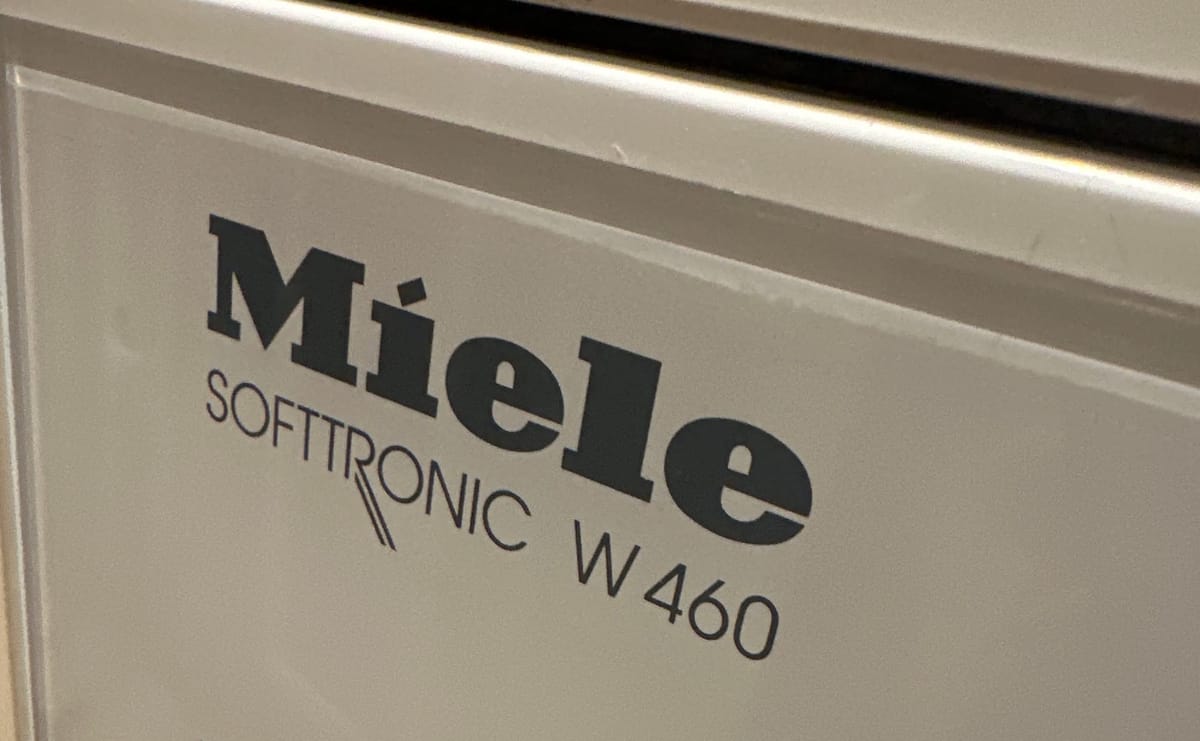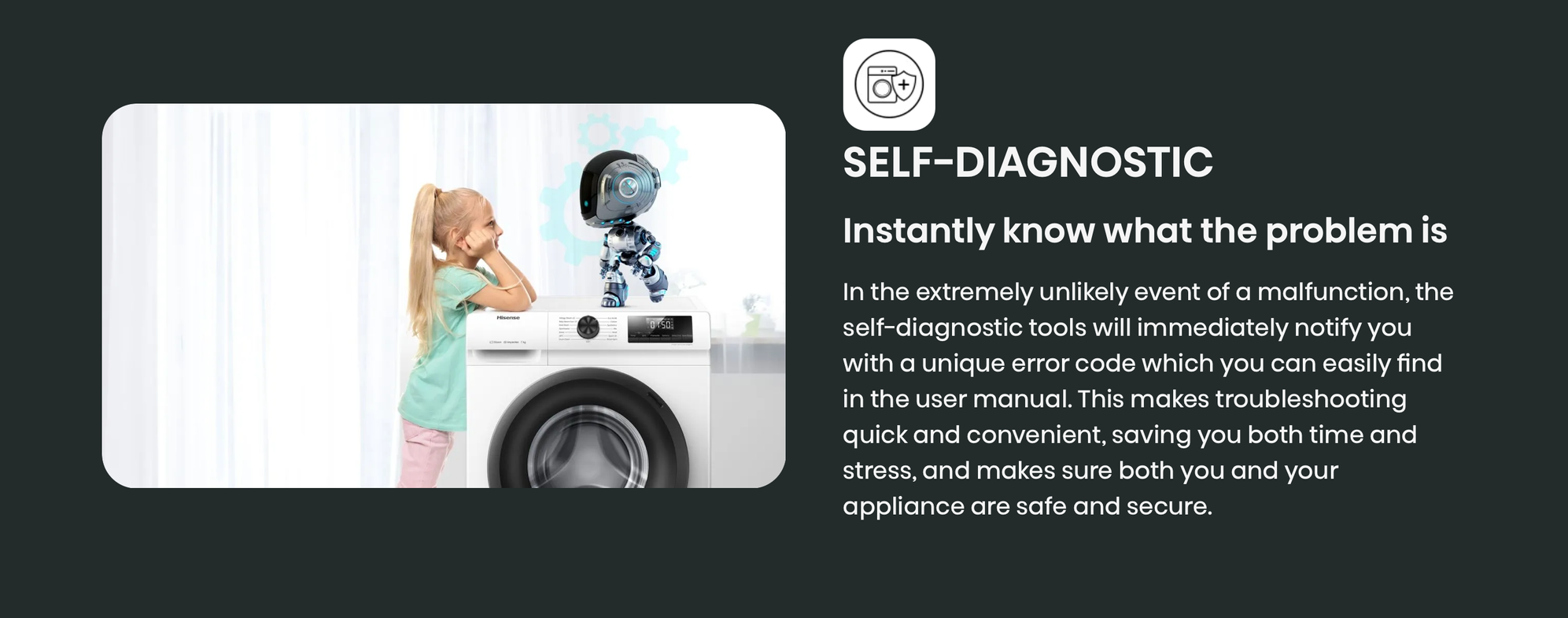How I fixed my washing machine with Conversational AI

When we bought our current house, the washing machine came with it. It’s a hulking Miele and it must be 10+ years old, if not much older. I’m a big fan of really well made machinery, but at the same time, I’ve also had a lot of experience dealing with £75 call-out-fee repair people—- and by the way, that’s £75, including the first hour. Then another £55 for the extra labour Then you have to allow for the obligatory parts. So before you know it, you’re spending £282 to get your washing machine fixed.
And for context, the cheapest new washing machine I could find on AO.com yesterday was £269. (For the Miele die-hard, the cheapest was £799 and the most expensive, a whopping £2,469.)
Ok. Back to the story: My wife announced the washing machine had a problem yesterday morning. I had a look at it and saw the “drainage fault” light flashing away. Something like that.
Oh dear.
I did the time tested thing and switched it off… waited 10 minutes, then switched it on again.
Still a problem.
I waited an hour; tried again.
Still a problem.
Fast forward a few hours and my wife and I went shopping. I have far too many memories of having to essentially buy a new washing machine’s worth of repair costs in the past.
We selected a model. I was hovering on the buy button when I said to my wife, “Look, let me just…”
I thought it was worthwhile trying AI.
Conversational AI.
“Let me give it a shot,” I thought to myself as I marched back to the washing machine and flipped up ChatGPT on my phone. I used the continuous audio conversation mode.
Step 1 was to take a photo of the front section of the Miele with the model number detail.
“This red light is flashing,” I said to ChatGPT, “on this washing machine model.”
“Ah yes, the WH640” (or whatever), says ChatGPT. It suggested that given the error indicator, the first thing I should check is the filter.
Dear reader, I couldn’t point out a filter on a washing machine for a million pounds. Before yesterday, I’d have suggested the problem was probably on the back of the unit somewhere. As you may infer, this is not hitherto an area of expertise for me at all, and I was perfectly fine with that being the case.
ChatGPT suggested I look either bottom left or bottom right of the machine. There was a cut-out section I could see, so I sent it a photo to confirm.
“Yes, that’s the one,” goes ChatGPT, “See if you can find a way to pop it open. Sometimes you push, etc…”
I couldn’t figure out how to open the thing without damaging it.
“Go and get a flathead screwdriver,” instructed ChatGPT.
I duly did so. Duh. I fiddled and the little door opened.
“Ok, now turn the handle you can see slowly,” says ChatGPT, “But go and get yourself a bowl or basin as there’s likely to be a lot of water to drain.”
I did so.
Flipping impressive, so far.
I gave a running commentary to ChatGPT as the water poured out and eventually, bits of Velcro and other detritus began to pour out. These things had clearly been gumming it all up.
ChatGPT kept on with its encouragement and support as I went through the process.
“Ok what about this plastic thing, shall I rinse that too?” I prompted.
“Yes, that’s the filter unit, go ahead and rinse that,” replied ChatGPT.
I cleaned the whole thing out and put it back together.
“Now what?” I asked. I had the phone balanced on top of the Washing Machine whilst I was ‘operating’.
“Give it a test!” said ChatGPT with some enthusiasm.
I did.
It worked.
Now, anyone with half a clue will obviously know (as I do now) that this is actually quite a simple process. Stupid simple. So simple, in fact, that you are meant to be doing this (says a commenter on TikTok last night) every 1-2 months.
We’ve been in the house almost 2.9 years and… yeah, we haven’t done that once.
So. What can I draw from this experience?
Well, first… there’s a Bosch tumble drier next to that Miele — and ChatGPT couldn’t immediately help me with that a little while ago when I wanted to switch off the buzzing. I had to go and find the electronic PDF manual, upload it to ChatGPT and then get it to tell me the answers. That worked fine. But let me say this: Thanks for nothing Bosch.
Why did I have to go and download the sodding manual? Why the extra step? Why did you make me do that, Bosch? Why didn’t you surface it directly to ChatGPT when its crawler came calling?
Miele didn’t make me go hunting for the manual.
Either by luck or by design, ChatGPT immediately recognised the model from the photo I sent with the model number on it. ChatGPT had the data. When I was trying to sort out the Bosch issue, ChatGPT could only give me circumstantial generic advice because it hadn’t been fed the detail.
I don’t want WiFi-Connected, I don’t want self-diagnostics. I want it CAI-connected and CAI-managed.

As I browsed the new washing machines yesterday with m y wife, I remember saying, “oooh, WiFi-enabled!” as I scrolled past various models.
Now I’m rather clear about what I want from my home appliances: Don’t give me WiFi. Don’t give me self-diagnostics.
Looking at Hisense - just by random example - I really don’t want to be messing about with manuals. Not in 2025:
“The self-diagnostic tool will immediately notify you with a unique error code which you can easily find in the user manual”
Er. No thanks.
Here, then, are my questions for appliance manufacturers:
What are you doing to ensure that all leading Conversational AI LLMs have got access to all of your manuals?
I would be phoning OpenAI and actually sending them every single public-facing product PDF your company has, so that it can rapidly serve your customer queries. Likewise with Google Gemini and so on. At the very minimum, make sure your PDF manuals are easily accessible for scrapers. A lot of manufacturers make you select the model you’re after from a dropdown which might not make all of the data properly available to be scrapped.
What’s your AI Agent strategy for the home?
What are you doing to surface the status and capabilities of your appliances in readiness for the inevitable home AI agents? Are you going to try and own the AI agent space, or are you going to make sure you’re playing nicely with any agents that come along?
What activities have you got underway to comprehensively understand how your customers are currently using Conversational AI in the home?
e.g. Your primary interface to me, for this recent experience, was via ChatGPT. The next time anything in the house doesn’t work, that will be my first stop.
What are you doing to enable me to be informed of appliance status whilst I’m in the home?
I really like the idea of an ‘Appliance App’ — connected by WiFi — or, at least, I did, until I had my ChatGPT experience.
I’m not sure I want to bother installing yet-another-app on to my phone. I think I’d probably prefer to have these kinds of updates and messaging piped through my CAI agent (which I don’t really have yet). At the moment, I think I’d rather get appliance updates by WhatsApp.
Right, there we go.
Would you like to watch a video of me discussing my experience, then here we go:




